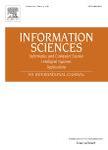版权所有:内蒙古大学图书馆 技术提供:维普资讯• 智图
内蒙古自治区呼和浩特市赛罕区大学西街235号 邮编: 010021

作者机构:Yonsei Univ Dept Comp Sci Seoul 120749 South Korea Yonsei Univ Coll Med Canc Metastasis Res Ctr Dept Internal Med Seoul 120749 South Korea Gachon Univ Med & Sci Dept Informat Technol Inchon South Korea
出 版 物:《INFORMATION SCIENCES》 (信息科学)
年 卷 期:2008年第178卷第1期
页 面:88-105页
核心收录:
学科分类:12[管理学] 1201[管理学-管理科学与工程(可授管理学、工学学位)] 08[工学] 0812[工学-计算机科学与技术(可授工学、理学学位)]
基 金:Korea Science and Engineering Foundation, KOSEF Ministry of Science and Technology, Taiwan, MOST, (R01-2006-000-11106-0) Ministry of Science and Technology, Taiwan, MOST
主 题:data mining microarray data analysis microarray data integration microarray data classification Informative gene selection
摘 要:The ability to provide thousands of gene expression values simultaneously makes microarray data very useful for phenotype classification. A major constraint in phenotype classification is that the number of genes greatly exceeds the number of samples. We overcame this constraint in two ways;we increased the number of samples by integrating independently generated microarrays that had been designed with the same biological objectives, and reduced the number of genes involved in the classification by selecting a small set of informative genes. We were able to maximally use the abundant microarray data that is being stockpiled by thousands of different research groups while improving classification accuracy. Our goal is to implement a feature (gene) selection method that can be applicable to integrated microarrays as well as to build a highly accurate classifier that permits straightforward biological interpretation. In this paper, we propose a two-stage approach. Firstly, we performed a direct integration of individual microarrays by transforming an expression value into a rank value within a sample and identified informative genes by calculating the number of swaps to reach a perfectly split sequence. Secondly, we built a classifier which is a parameter-free ensemble method using only the pre-selected informative genes. By using our classifier that was derived from large, integrated microarray sample datasets, we achieved high accuracy, sensitivity, and specificity in the classification of an independent test dataset. (C) 2007 Elsevier Inc. All rights reserved.